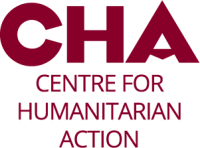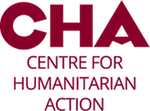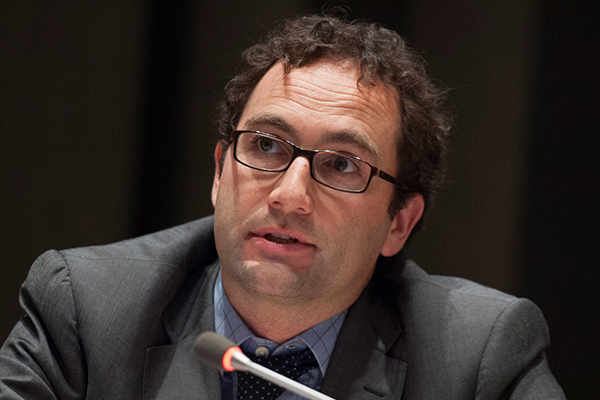| Author: | Damian Lilly |
| Date: | 3. March 2025 |
It is hard to think of a greater shock to the aid system – the loss of your largest donor. Agencies are still reeling from the stop-work order, 90-day aid freeze and the demise of USAID. Programmes are being suspended and jobs being cut.
The way the Trump administration has slashed US foreign aid has been wholly irresponsible. It will undoubtedly lead to many lives lost. But no-one should be surprised that this is happening.
I worked for the UN Palestine refugee agency UNRWA in 2018 when the first Trump administration cut its funding to the organisation by $300 million overnight. Overall, the US aid budget in fact increased during his first term as President.
This time around, though, the Republicans have been pretty clear about their intention to reduce the size of what they view as the wasteful parts of government not in line with American interests. It was just that USAID was first in the firing line of Elon Musk. There is something deeply disturbing about the world’s richest person going after the poorest.
Humanitarian aid was already decreasing
However, a reduction of US funding is merely representative of a broader trend of donor cuts in the aid sector since 2022. UN-coordinated appeals experienced their largest fall in funding on record in 2023. In 2024, there was $22.1 billion of humanitarian aid, a 27% reduction from the $30.5 billion received in 2022. With USAID cancelling ninety per cent of its contracts who knows where we are going to end up by the end of 2025.
The US is just the latest of the large donors to reduce their budgets. In 2020, the UK substantially cut its overseas aid to 0.5% of GDP, merging its aid department with its foreign office – the same as the US Government is now doing. The current Labour government just announced a further reduction to 0.3% of GDP to pay for increased defence spending. Germany also made similar reductions to its aid budget last year, as did the Netherlands. Even Switzerland, an erstwhile champion of humanitarian action, is cutting back what it spends on aid.
Several of the large UN agencies, including UNHCR and WFP, and international NGOs, NRC, IRC and Save the Children were already forced to make substantial budget cuts in the last couple of years. After years of unbridled growth there was a feeling of the humanitarian sector going from boom to bust. The US aid freeze has simply accelerated this trend and presented a challenge of a completely different magnitude given that it accounts for 40% of all international aid.
A predictable crisis
The question is rather why the humanitarian system was not more prepared for the likely US cuts when the writing was clearly on the wall. The sector prides itself on contingency planning and emergency preparedness, but few agencies would have taken measures in anticipation of what is happening now.
The over-reliance on US humanitarian funding should have been a warning sign and an impetus for the sector to reform. Efforts have been made to diversify the funding base from western governments. But the share of humanitarian money coming from non-traditional donors such as the Gulf states and elsewhere has remained stubbornly low.
Since 2023, there has also been work done to focus UN-led humanitarian appeals more on the most acute needs and life-saving responses. While welcome, there have been unintended consequences of this prioritisation and boundary setting. Millions of people that require assistance are being left out of appeals, the unit costs of providing aid is going up, while the new methodologies used raise doubts about the numbers being produced. The latest donor cuts are going to lead to a further re-examination of the appeals process.
The fact remains that the humanitarian system does not have an established approach for dealing with funding cuts. While now occurring on an unprecedented scale, it is not like this is the first time it has happened. The 2009 financial crisis also led to a steep fall in aid budgets although after this there was no stress test adopted to ensure the humanitarian system was better prepared for such shocks.
Cowed by the Trump administration’s bullying tactics aid agencies have been slow to voice their concern about the drastic humanitarian impact of the aid freeze with few agencies initially speaking out. They probably feel that any criticism is only going to make the eventual consequences even worse.
Instead, aid agencies have been quick to adopt the language of efficiency with the imperative to do more with less. There has until now been surprisingly little scrutiny about how aid agencies spend their money with no common measure for value for money. In the UK, the Independent Commission for Aid Impact scrutinises how taxpayers’ money is spent on overseas aid, but with limited powers to address any concerns noted.
An impetus for reform
The shrinking humanitarian sector should be dealt with not only as a threat but also an opportunity for fundamental change in the operating model of aid agencies. For too long the provision of aid has been dominated by large UN agencies and NGOs who have been concerned as much by promoting their own brand and protecting their market share as they have about helping crisis affected communities in the most effective way.
Many agencies will struggle to survive. But mergers of organisations with similar mandates could bring a reduction of duplication and waste in a bloated aid industry and lead to greater cost efficiencies.
There also needs to be an acceleration of increasing the role of local responders, who are closer to communities and can deliver aid far cheaper, but have been sidelined in the sector by international agencies for too long because of a colonial mindset.
The US aid freeze is sending shockwaves through the aid system and is going to lead to greater suffering for some of the world’s poorest and crisis-affected countries. Governments, however, do have the right to review their aid policies, just preferably not like this.
Humanitarian aid saves countless lives and there needs to be a robust defence of the humanitarian cause and rebuilding of public support for it.
What is happening now though is a wake-up call to a humanitarian sector that has spent years talking about reform but failed to achieve meaningful change in the way it does business. The UN humanitarian chief, Tom Fletcher, has called for a ‘humanitarian reset’. There are no more excuses, as it is now a case of adapt to survive.
Damian Lilly is an independent consultant that writes on humanitarian issues.



Related posts
A shrinking humanitarian marketplace
19.12.2024Going Back: What to Expect in a Return to Trump’s Humanitarian Policy
05.12.20245 Thoughts about Trump and Humanity
12.11.2024